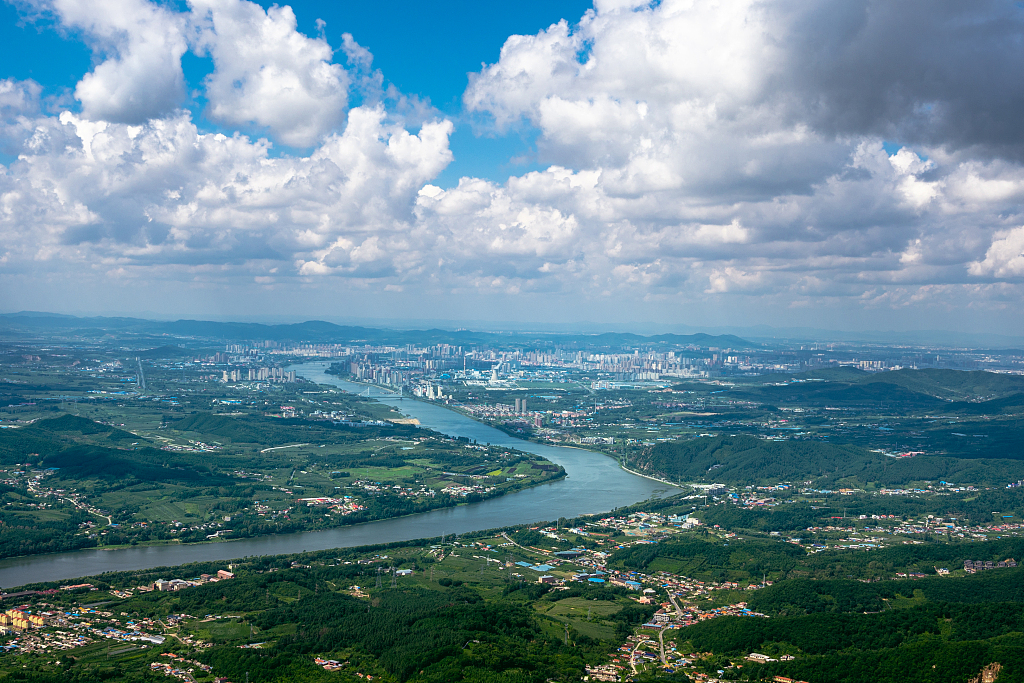The Songhua River got its name from the Manchu language, meaning the "river of heaven". Ranking third after the Yangtze and Yellow Rivers, it stretches 1,927 kilometers and covers a basin area of some 560,000 square kilometers, including the northeastern provinces of Heilongjiang, Jilin and Liaoning and the northern Inner Mongolia Autonomous Region.
The largest tributary of the Heilongjiang River (or Amur River, running through Russia, Mongolia and China), the Songhua River has nourished 69.3 percent of land in the three northeastern provinces, thus contributing remarkably to the agricultural development and the industrial and economic growth there.
The Songhua River basin abounds in natural resources, such as the forests of the Greater and Lesser Hinggan Mountains, and the Changbai Mountains, which make up 37 percent of the forest area in China. Wetlands scatter along the Songhua River, providing shelters for many wild animals, such as red-crowned cranes, hooded cranes and Siberian cranes.

The Songhua River stretches 1,927 kilometers and covers a basin area of some 560,000 square kilometers. /VCG
The Songhua River stretches 1,927 kilometers and covers a basin area of some 560,000 square kilometers. /VCG
Migrating north to the breeding ground every spring, flocks of wild red-crowned cranes fly across the Songhua River and settle at Zhalong National Nature Reserve, the largest wetland habitat for wild red-crowned cranes in the world, which is located along the banks of the Nenjiang River, a tributary of the Songhua.
The reserve was established in 1979 by Heilongjiang provincial people's government as the first nature reserve protecting red-crowned cranes. Later in 1987, it was built into a national nature reserve supported by the State Council. It was included in the List of Wetlands of International Importance in 1992.

Red-crowned cranes in Zhalong National Nature Reserve. /VCG
Red-crowned cranes in Zhalong National Nature Reserve. /VCG
Back in the 1950s, Water supplement was a severe problem in wetland. At the depth of the drought, the water area in the wetland's core area shrank to less than 100 square kilometers, only about one-fifth of the current water area, causing a series of wildfire year after year, posing a serious threat to the the red-crowned cranes.
Therefore, in 2001, the local government began to divert water from the Nenjiang River to restore the wetland ecosystem. By the end of 2017, 2.605 billion cubic meters of water had been supplied to Zhalong National Nature Reserve. The species was listed as vulnerable by the IUCN Red List of Threatened Species, with an estimated 2,000 to 2,650 mature individuals in the world. According to Zhalong National Nature Reserve, the number of wild red-crowned crane has grown to about 300 thanks to the painstaking efforts.
(If you want to contribute and have specific expertise, please contact us at nature@cgtn.com.)